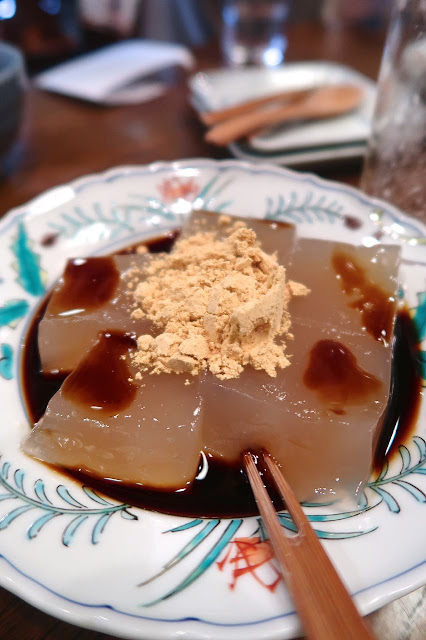Arched stone bridge leading to Tsurugaoia Hachimangū used only by the shogun
Tsurugaoka Hachimangū is the oldest and most important Shinto shrine in Kamakura
Established in 1180 by Yoritomo Minamoto, the first shogun of the Kamakura Era,
the shrine is the spiritual heart of Kamakura
Shinto priest mopping away the wet rain on the Maiden (shrine stage) with zen-like concentration
Hōkoku-ji bamboo grove with more than 2000 Mōsō bamboo
The small tea house hidden away in the bamboo grove, that for 500 yen we were treated to a bowl of Matcha tea and traditional Japanese sweets
Wet moss covered stones and glistening leaves
Enjoying a bowl of Matcha tea overlooking the serene bamboo grove
with the sound of rain drops - very zen!
Little Japanese sweets known as 'higashi' are often served with matcha tea
Small pavilion at Hōkoku-ji where I got my temple book (goshuin) signed by a monk,
who for a few yen, marks it with beautiful calligraphy and stamps it with red seals
Hōkoku-ji bellower with its original thatched roof dating from 1334
Japanese unripe wonderberries
Path leading up to Meigetsu-in with atmospheric mist covered mountains
Meigetsu-In is nicknamed the 'Ajisai Temple' because of the abundance of Hydrangea blossoms that cover the grounds each June
The main hall (hodo) of Meigetsuin Temple through the boughs of a Japanese maple
Meigetsuin Temple hall with stone lantern in the rain
Japanese purple beautyberries
Dankozura Kosuzu is an institution in Kamakura, serving handmade soba
Side entrance of Kosuzu through its small garden
Spicy wasabi peas
Cold Sapporo beer in small Japanese beer glasses
Kamaboko: Cold Japanese fish cakes made with steamed white fish paste
which can be enjoyed on its own or with a light drizzle of soy sauce
Soy sauce in a lovely polkadot ceramic pot
Cold soba noodles (zaru soba) with julienned wakame
Tsuyu is a soy and mirin dipping sauce for cold soba noodles
Warm soba noodles
Kamo Nanban Soba: Hot soba noodles served in a warm dashi and soy broth with slivers of perfectly cooked duck breast and green onions
Kosuzu's famous chilled warabi mochi with black honey and nutty kinakara soybean powder
The Great Bronze Buddha (Daibutsu) at Kōtoku-in is the tallest Buddhist statue in the world
Smoke from the bronze incense burner in front of Daibotsu is to ward off evil spirits
The Sammon Gate of Hase-dera Buddhist Temple
Beautiful ponds and gardens are one of the highest of the temple
Statue of sitting Keneo bodhisattva overlooking the pond
Wall of tiny mizuko-jizo statues honour the memory of stillborn babies is unique in Japan
Incense sticks burning in front of Hasadera Temple
Hasadera Temple with the 14th-century gold statue of the Goddess of Mercy
The 1300 year old gilded wooden statue of 'Kannon', the 11-headed Goddess of Mercy
13th-century Hasedera Temple Bell
Kannan-do is the main hall of the Buddhist Temple and houses a museum these days
The temple garden with pond full of koi


























































































